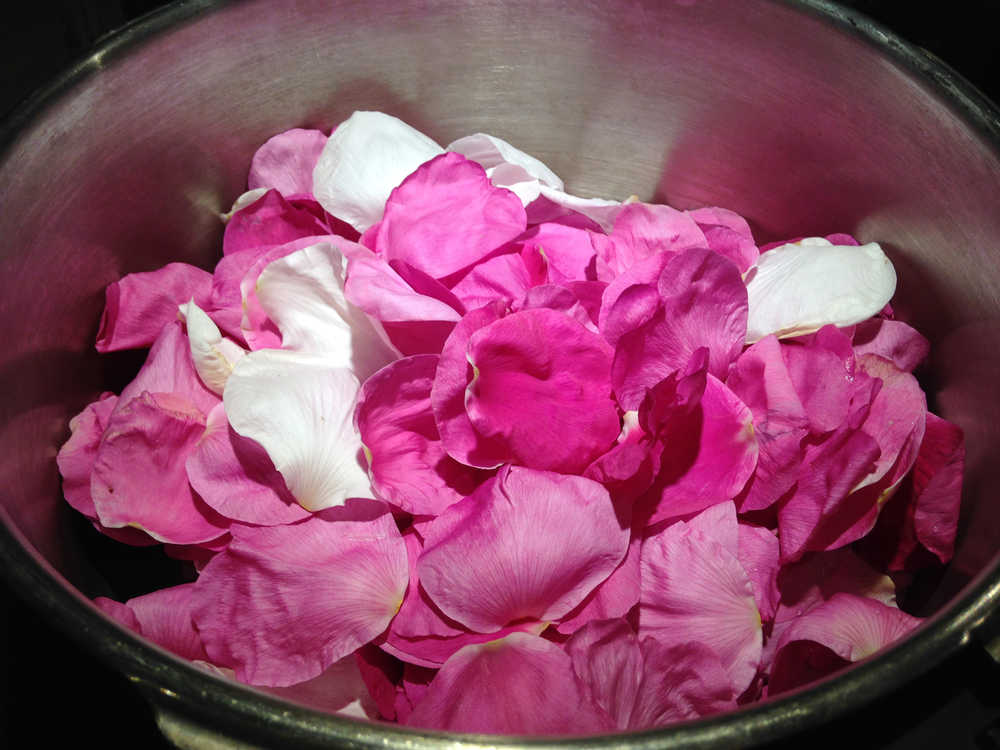When I was growing up, I never understood the fuss about roses. Yes, they were pretty and smelled wonderful when they bloomed, but it was such a tiny reward for all the work they required.
Imagine my reaction when I saw these wild tangles of magenta, pink, and white when I arrived in Juneau. Instead of hybrid, sensitive roses that needed expert care, you had hedges of roses giving off their delightful scent and no one seemed to fuss about them.
With all this abundance, it seemed natural to harvest them. I started with rose hips. I picked them when the first light frost fell after learning the previous year that after a hard frost, roses disintegrate into mush.
With firmer fruit, I’d diligently scoop the inside of the rose hip while a friend read descriptions about how the hairs on the seeds cause all sorts of digestive issues. I’d pause after an hour and look at the paltry amount we had done. Then I’d turn to the bag of unprocessed rose hips and my enthusiasm to do any more would die.
This year, the drifting smell of Sitka roses reminded me of something else, a different potential that promised easier rewards. While I was in Boston, I lived in the suburb of Watertown, which has a huge Armenian population. Down on Mt. Auburn Street, there were shops that sold bags of cumin and other spices. Near the front windows, the cases held baklava and other pastries with dates and nuts casting a heady fragrance of honey and roses.
Reminded by that scent, I decided to try to harvest rose petals. It was ridiculously easy. Roses don’t last too long and after a few days, the petals loosen up and it’s easy to pluck them before they fall to the ground. When I tell people what I’ve done, they tend to cringe at the thought of desecrating a rose hedge. I promise you that there were lots of flowers that remained in addition to buds that hadn’t opened yet.
Some of the petals I dehydrated for use in a traditional tangine (a North African stew) this winter. Others I put in a jar and coated with sugar. The sugar absorbed the oils and scent of the rose petals. After a week of shaking up the jar, I put it in a food processor to grind up the petals. Then I spread the sugar and petals on parchment paper and slowly dried it in the oven at 200 degrees.
Every 5-7 minutes, I took a spatula and moved the sugar and petals around to remove lumps. When the sugar no longer had that glassy appearance, but was muted, I took it out and let it sit. When it had cooled, I once again put it in the food processor to create a consistent texture. The taste is sugar at first, but then it brings forth this wonderful, lingering aftertaste of what roses smell like.
I also transformed the petals into rose water and rose petal syrup. My hope is that on one of those deep, dark days of winter, I’ll open a jar and find myself smelling roses on a warm summer day once again.
• Corinne Conlon is a freelance writer based out of Juneau. She can be reached at dirtgirlgardening@gmail.com.
More of Corinne’s columns:
Dirt Girl: Decked out in green

